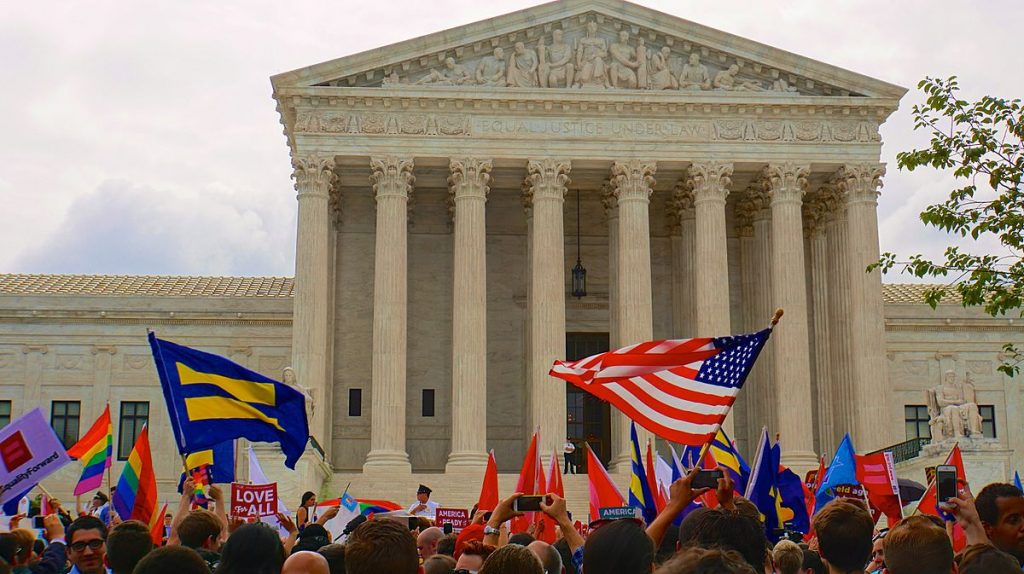The digital age has fundamentally reshaped how we communicate, offering unprecedented avenues for instant connection and information sharing. Yet, this boundless connectivity comes with a significant downside: the alarming surge in online defamation cases. What was once largely confined to traditional media or face-to-face interactions has exploded onto social media platforms, review sites, forums, and personal blogs, allowing harmful, false statements to spread globally at the speed of light. The anonymity afforded by the internet, combined with the virality of digital content, has created a fertile ground for reputational damage to individuals, businesses, and organizations. Navigating the complex interplay of free speech rights and the right to reputation has become a central legal challenge in the modern era. This article offers an in-depth exploration of the intensifying trend of online defamation litigation, dissecting the key drivers behind its rise, the unique legal complexities it presents, the challenges of identification and cross-border enforcement, and the evolving landscape of prevention and redress in a world where a single post can devastate a reputation.
Why Online Defamation is Surging

The dramatic increase in online defamation lawsuits isn’t accidental; it’s a direct consequence of several interconnected factors inherent to the digital realm.
A. Ubiquitous Online Communication
Virtually everyone is now online, using social media (Facebook, X/Twitter, Instagram, TikTok), messaging apps, review sites (Yelp, Google Reviews), forums, and blogs to communicate. This widespread participation means there are exponentially more opportunities for defamatory statements to be made, intentionally or otherwise. The sheer volume of online content makes it difficult to monitor and control.
B. Speed and Virality of Information Dissemination
False or damaging statements can go “viral” almost instantaneously, reaching millions of people in a matter of hours or days. Unlike traditional media, where print runs or broadcast times limit immediate exposure, online content can be shared, retweeted, and reposted infinitely, making containment incredibly difficult. The rapid spread amplifies the potential for harm exponentially.
C. Perceived Anonymity and Lack of Accountability
The internet often provides a veil of anonymity, leading some individuals to believe they can make inflammatory or false statements without consequence. This perceived anonymity can embolden individuals to write things online they would never say in person. While true anonymity is rare for determined investigators, the initial ease of posting without immediate identification contributes to the surge.
D. Low Barrier to Entry for “Publishing”
Anyone with an internet connection can now be a “publisher.” There are no gatekeepers, editors, or fact-checkers for personal social media posts or blog comments. This low barrier to entry means that unverified, emotionally charged, or malicious content can be published without traditional journalistic scrutiny, increasing the likelihood of defamatory statements.
E. Persistence and Permanence of Online Content
Once something is posted online, it’s incredibly difficult to remove entirely. Even if a post is deleted, it might have been archived, screenshotted, or replicated elsewhere. This digital permanence means that defamatory statements can continue to cause harm long after their initial publication, impacting individuals’ personal lives, professional careers, and future opportunities.
F. Blurring Lines Between Personal and Professional
Social media often blurs the lines between personal opinions and professional conduct. Employees, job applicants, and business owners may find their online personal statements scrutinized in a professional context, and a casual, ill-considered post can easily spiral into a defamatory accusation with serious consequences.
The Legal Landscape of Online Defamation: Unique Complexities
Online defamation cases, while rooted in traditional defamation law, present unique challenges that test existing legal frameworks.
A. Defining Defamation: Libel vs. Slander
Defamation broadly refers to false statements that harm someone’s reputation. It’s typically categorized as:
- Libel: Written or broadcasted defamation (e.g., social media posts, articles, emails, videos). This is the most common form of online defamation.
- Slander: Spoken defamation (less common online, but could apply to live streams or podcasts).To win a defamation case, a plaintiff generally must prove several elements, often including:A. False Statement: The defendant made a false statement of fact (not opinion).
B. Publication: The statement was communicated to a third party.
C. Harm: The statement caused harm to the plaintiff’s reputation (e.g., financial loss, emotional distress, loss of employment).
D. Fault: The defendant acted with some degree of fault (e.g., negligence or “actual malice” for public figures).
B. Identifying the Speaker (Anonymity Challenges)
A significant hurdle in online defamation cases is identifying the person behind an anonymous or pseudonymous post. Plaintiffs often need to obtain court orders (like a “John Doe” subpoena) to compel internet service providers (ISPs) or social media platforms to reveal the identity of the poster. This process can be lengthy, costly, and sometimes unsuccessful.
C. Jurisdictional Issues in a Borderless World
The global nature of the internet means a defamatory statement can be posted in one country, seen in another, and harm someone in a third. Determining which country’s laws apply and which court has jurisdiction to hear the case is a major challenge. This can lead to complex “forum shopping” by plaintiffs or defendants.
D. Platform Liability (Section 230 in the US, and Beyond)
A critical legal debate revolves around the liability of online platforms themselves.
- Section 230 of the Communications Decency Act (US): In the United States, Section 230 generally protects interactive computer service providers (platforms like Facebook, X/Twitter, Yelp) from liability for content posted by their users. It states that platforms are “not treated as the publisher or speaker” of third-party content. This broad immunity is often cited by platforms and is a major point of contention, with critics arguing it enables the spread of harmful content.
- Varying International Approaches: Other countries and regions (e.g., the European Union with its Digital Services Act – DSA) are adopting different approaches to platform liability, often imposing more responsibility on platforms to moderate content or respond to notices of illegal content. This creates a fragmented global legal landscape.
E. The Distinction Between Fact and Opinion
Defamation law protects against false statements of fact, not expressions of opinion. Online, distinguishing between a factual assertion and a subjective opinion can be difficult, especially in casual social media exchanges. Courts must carefully analyze context, tone, and wording to make this distinction.
F. Public Figures vs. Private Individuals
The standard of fault required to prove defamation varies depending on whether the plaintiff is a public figure or a private individual.
- Public Figures: (e.g., celebrities, politicians) must prove “actual malice,” meaning the defendant published the false statement with knowledge that it was false or with reckless disregard for its truth or falsity. This is a very high bar to meet.
- Private Individuals: Generally only need to prove negligence (the defendant failed to act with reasonable care in ascertaining the truth of the statement). This is a lower standard but still requires proof of fault.
G. Right to Be Forgotten and De-indexing
In some jurisdictions (e.g., EU, under GDPR), individuals have a “right to be forgotten,” which can mean the right to request search engines to de-index links to outdated or irrelevant defamatory content. This offers a potential remedy beyond direct litigation but applies differently across the globe.
Litigation Trends and Emerging Legal Frontiers

The surge in online defamation cases is leading to new litigation trends and pushing legal boundaries.
A. Reputational Management and Strategic Litigation
Individuals and businesses are becoming more proactive in managing their online reputations, and litigation is increasingly viewed as a tool in this strategy. This includes not just seeking damages but also obtaining court orders for content removal or identifying anonymous posters.
B. Fighting Against Review Extortion and Fake Reviews
Businesses, particularly in the service industry, are battling against false or defamatory online reviews, sometimes even instances of “review extortion” where individuals threaten negative reviews unless demands are met. Litigation aims to unmask anonymous reviewers and have fraudulent reviews removed.
C. Cyberbullying and Harassment as Defamation
While often addressed by specific cyberbullying laws, severe forms of online harassment that involve false statements intended to damage reputation can lead to defamation lawsuits, especially when the victim is an adult.
D. “Revenge Porn” and Non-Consensual Intimate Imagery
While often covered by specific privacy or harassment laws, the non-consensual sharing of intimate images often involves accompanying defamatory statements or implies false narratives, leading to combined legal claims.
E. AI-Generated Defamation and Deepfakes
The rise of generative AI and “deepfake” technology presents a terrifying new frontier for online defamation. AI can create highly realistic but entirely false images, videos, or audio recordings of individuals doing or saying things they never did. Determining responsibility (AI developer, user, platform) and proving intent for such content will be a major legal challenge.
F. SLAPP Lawsuits (Strategic Litigation Against Public Participation)
Conversely, some wealthy individuals or corporations use defamation lawsuits as SLAPP suits to intimidate critics or silence legitimate free speech, rather than for genuine reputational harm. Anti-SLAPP laws in some jurisdictions aim to protect defendants from such abusive lawsuits by allowing for early dismissal and recovery of legal fees.
G. Cross-Border Enforcement Challenges
Even if a plaintiff wins a defamation judgment in their home country, enforcing that judgment against a defendant located in another country, or compelling a foreign platform to remove content, remains a significant practical and legal challenge due to differing legal systems and sovereignty issues.
Prevention, Remediation, and Best Practices
Given the difficulties of online defamation, prevention, rapid remediation, and strategic responses are crucial.
A. For Individuals:
- Be Mindful of Online Conduct: Exercise caution and critical thinking before posting or sharing anything online. Assume everything is permanent and public.
- Know Your Rights: Understand the basics of defamation law and your rights to free speech, as well as the limitations.
- Document Everything: If you believe you are a victim of defamation, immediately screenshot, archive, and document all instances of the false statements, including URLs, dates, and times.
- Consider Professional Help: Consult with a lawyer specializing in defamation or internet law to assess your options.
- Focus on Reputation Management: Sometimes, a public response, a factual rebuttal, or using online reputation management services can be more effective than litigation alone.
B. For Businesses:
- Monitor Online Presence: Actively monitor social media, review sites, and online forums for mentions of your brand, products, and services to quickly identify potential defamatory content.
- Develop a Response Strategy: Have a clear plan for how to respond to negative or false online statements, including when to engage, when to ignore, and when to seek legal counsel.
- Train Employees: Educate employees on social media policies, professional conduct online, and the risks of online defamation, both as perpetrators and victims.
- Embrace Transparency and Customer Service: A strong commitment to customer service and transparency can help build a positive online reputation that insulates against isolated negative reviews.
- Utilize Platform Removal Processes: Many platforms have mechanisms for reporting content that violates their terms of service or is clearly defamatory. Utilize these first before resorting to litigation.
C. For Online Platforms:
- Clear Terms of Service and Community Guidelines: Publish and enforce robust terms of service and community guidelines that prohibit defamation and other harmful content.
- Efficient Reporting and Review Mechanisms: Provide accessible and efficient processes for users to report defamatory or violating content, and commit to timely review and action.
- Transparency Reports: Consider publishing transparency reports on content moderation efforts and takedown requests.
- Invest in AI for Content Moderation: Leverage AI and machine learning to help identify and flag potentially defamatory or harmful content at scale, augmenting human review.
- Cooperate with Law Enforcement: Respond appropriately and timely to legitimate legal requests for user identification in defamation cases, balancing user privacy with legal obligations.
The Future of Online Defamation Law
The legal landscape of online defamation is dynamic and will continue to evolve rapidly in response to technological advancements and societal demands.
A. Increased Platform Accountability (Global Trend)
Expect more countries to move towards models that place greater responsibility on online platforms for content posted by their users, moving away from broad immunity similar to Section 230 in the US. The EU’s Digital Services Act (DSA) is a prime example of this trend, mandating more proactive content moderation and greater transparency from platforms.
B. Regulation of AI-Generated Content and Deepfakes
The rise of AI-generated content, especially “deepfakes,” will necessitate new laws or amendments to existing ones specifically addressing false and defamatory content created by AI, with discussions on liability for developers, users, and platforms. Attribution of AI-generated content will be a key area.
C. Greater Focus on Data and Identity Verification
Governments may explore stricter identity verification requirements for certain online activities, or demand greater data sharing from platforms in response to court orders, to make it easier to identify and hold anonymous defaming parties accountable. This will spark intense privacy vs. accountability debates.
D. Development of International Cooperation Mechanisms
To effectively combat cross-border online defamation, there will be increased pressure for more streamlined international cooperation among law enforcement and judicial bodies, potentially leading to new treaties or protocols for evidence sharing and judgment enforcement.
E. Growth of Reputation Management Technologies
The market for online reputation management tools and services will continue to expand, offering advanced solutions for monitoring, analyzing, and mitigating reputational damage from online content.
F. Balance Between Free Speech and Reputation Rights
The core tension between freedom of expression and the right to reputation will remain a central legal and societal debate. Courts will continue to refine the boundaries, especially in the context of citizen journalism, online reviews, and public discourse.
Conclusion
The surge in online defamation cases is a stark reminder that while the internet offers unparalleled opportunities, it also presents significant risks to reputation and livelihood. The ease with which false and harmful statements can spread, combined with the complexities of online anonymity and cross-border jurisdiction, makes combating digital defamation a formidable challenge for individuals, businesses, and legal systems worldwide. Yet, as the law continues to adapt and technological solutions emerge, the landscape is gradually shifting towards greater accountability.
The battle against online defamation is an ongoing one, but with increasing awareness, evolving legal frameworks, and a collective commitment to responsible digital citizenship, the future holds the promise of a more accountable and trustworthy online environment. Protecting one’s reputation in the digital age is no longer an option; it’s an imperative.













